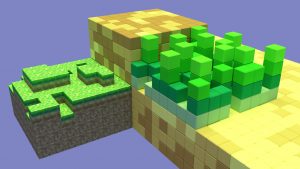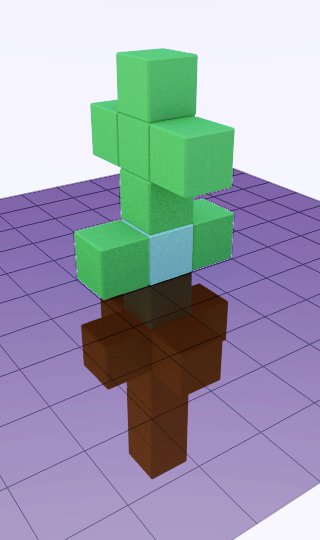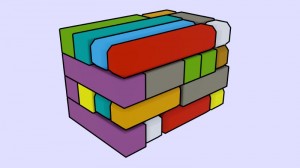Minecraft uses a single-scale voxel engine, with 1m blocks. The lack of sub-division prevents easily modifying smaller and larger scales.
Instead of considering block textures to be immutable and cosmetic, it could be a  rendered representation of a projection of the sub-blocks that compose the block itself. In this way, we could see the classic Minecraft grass and dirt blocks as a single level of nesting in a multi-level system of detail. Because all Minecraft blocks share a texture size (16×16 by default), this isn’t a particularly difficult stretch of the imagination. Minecraft blocks, too, exist in 16×16 chunks, each of which carries some data about biomes, heightmaps, and so forth. The problem here is that all of the user-level and simulation-level operations act on a block level. None of them operate on the textures or the chunks. Continue reading
rendered representation of a projection of the sub-blocks that compose the block itself. In this way, we could see the classic Minecraft grass and dirt blocks as a single level of nesting in a multi-level system of detail. Because all Minecraft blocks share a texture size (16×16 by default), this isn’t a particularly difficult stretch of the imagination. Minecraft blocks, too, exist in 16×16 chunks, each of which carries some data about biomes, heightmaps, and so forth. The problem here is that all of the user-level and simulation-level operations act on a block level. None of them operate on the textures or the chunks. Continue reading



